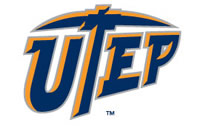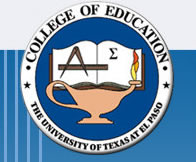
Bill Robertson, Ph.D. - Classes
Teacher Education Department
TED 5314 - Concept-Based Science Education
Evaluation
A: 90% - 100%, B: 80% - 89%, C: 70%-79%, D: 60%-69%, F: <60%
The overall grade for the class for each student will be calculated as follows: 20% daily attendance & participation, 20% short research papers, 20% quizzes and discussions, 20% Final Product Development, 20% Final Product Presentation.
- Attendance -100 Points
- Reflection Papers (2 each worth 50 points) - 100 points
- Quizzes (2) and Discussions (3) - 100 points
- Final PBL Product - 100 points
- Final PBL Presentation - 100 points
Total - 500 points
Final Assignment Guidelines
Task
You are tasked with designing, developing, and implementing the beginnings of an appropriate grade level problem-based learning curriculum. You will develop a PowerPoint and post your information in the Discussion area in WebCT entitled "Final Projects" as an attachment. The purpose is to have you demonstrate an understanding of the concepts associated with problem-based learning within a real world science topic that is appropriate for your current classroom. Students report out on a PBL learning unit based on instructional models such as the learning cycle lesson design and the 5-E model. Concept-Based Science Education explores historical perspectives of science and the role of science in societal decisions. The class includes research-based principles in science learning and technology integration.
PBL Project
Problem-Based Learning Format Final Product PowerPoint Template and Rubric - Develop a PowerPoint that consist of a series of slides that meets the requirement of the Product Rubric and is posted as an attachment in the Final Product Discussion area of the class WebCT. You may also use the specific Web site you are referencing as part of your presentation. You will provide this for the class for sharing and the instructor for grading.
Presentation
Each student will have 10-15 minutes to present their materials and to field questions from classmates.
Evaluation
The evaluation for your Final grade will be a combination of your PBL product that you develop and your presentation in the classroom. The rubric is a tool that combines the rankings (usually on a scale of 1 - 5) used to assess how well students understand each of the criteria with the most important ideas or concepts to be mastered in the lesson. There will be a rubric that will be used for the evaluation of the Final Powerpoint product (100 points) and the presentation (100 points).
Rubrics for Evaluation
The rubric is a valuable tool that uses negotiable contracting for a formal assessment. Working together, the instructor and the students create a ratings chart that reflects the objectives to be learned within a given assignment. The rubric is a tool that combines the rankings (usually on a scale of 1 - 5) used to assess how well students understand each of the criteria with the most important ideas or concepts to be mastered in the lesson. Depending on whether a student performs higher or lower in a certain category, each level may also numerical gradations. The learner using the rubric can understand the importance of each objective based on its relation to the overall lesson. The rubric provides a more detailed understanding of the skills demonstrated within a lesson, project, or unit of study, unlike a traditional number or letter grade. Below are the two rubrics that will be used as assessment instruments for the Final Web Site Product and the Final Presentation.
Syllabus | Schedule | Research Assignments| Discussions | Student PBL Products| Evaluation | Resources | Links

Bill Robertson, Ph.D. (robertson@utep.edu)
Teacher Education Department, College of Education, University of Texas at El Paso